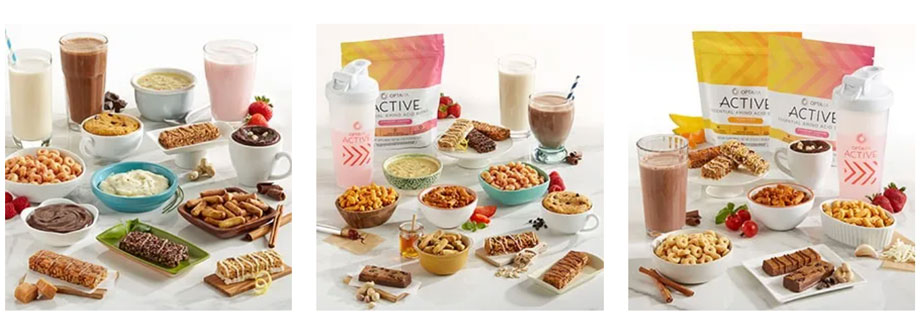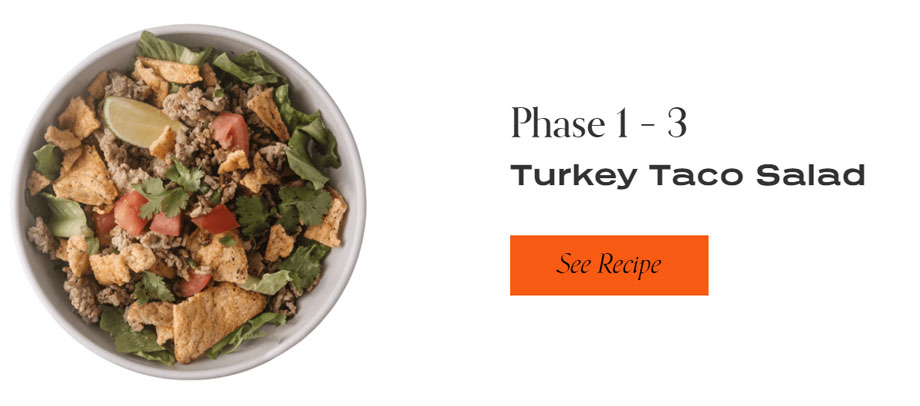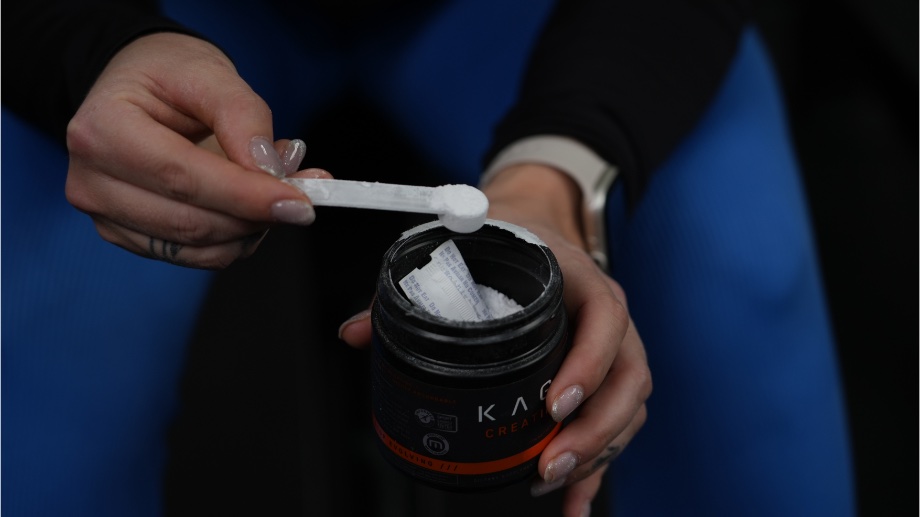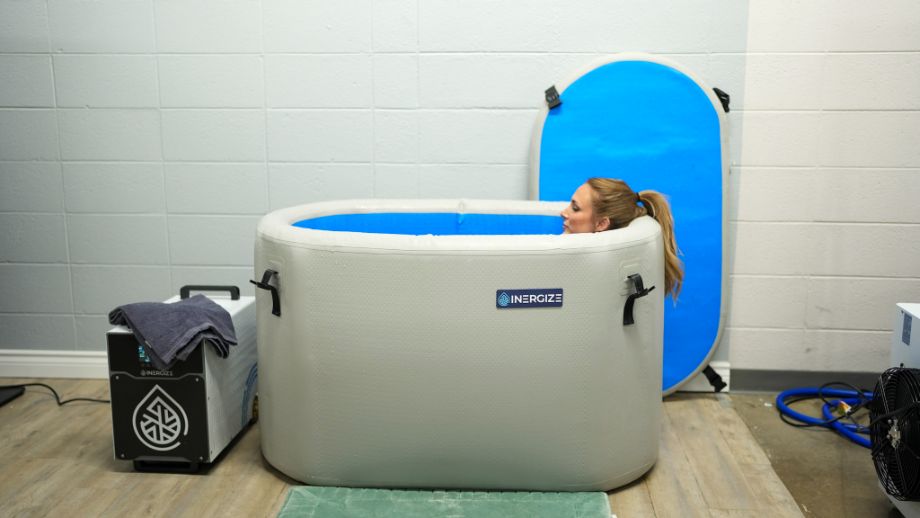The nutrition space is oversaturated with weight loss programs and low-carb/low-cal diets with guarantees to help you lower the number on the scale. Many of these programs are poorly designed or rely too heavily on packaged, processed foods, making it easier to control your calories but not teaching you much (or anything) about nutrition and wellness.
Optavia and Ideal Protein are two low-carb diets designed to prompt quick weight loss through extreme calorie restriction. While this approach can be okay in the short term, I don’t recommend sticking with it for any prolonged period. As a nutritionist, I believe the healthiest approach to fat loss and maintaining a healthy weight is combining a whole-foods-based diet with strength training.
That said, if you’re curious about these two diet options, here’s everything you need to know about Optavia vs. Ideal Protein, including the lowdown on each diet, sharing the pros and cons, and highlighting the similarities and differences to help you decide if either is right for you.
Editor’s Note and Medical Disclaimer: This article is intended for educational and informational purposes only. It is not intended as a substitute for medical advice. Weight loss programs are not recommended for people with a history of disordered eating. For health advice, contact a licensed healthcare provider. If you need help with disordered eating, contact NEDA.
Our Honest Take: Optavia vs Ideal Protein
As a functional nutritionist, I don’t recommend either of these diets. For starters, they’re too low in calories and likely to leave you feeling hungry, irritated, tired, and weak—all things that can decrease your overall quality of life.
Both diets rely on ultra-processed foods and snacks, which must be purchased directly through the company. Not only is this more expensive, but the food likely isn’t as nutrient-dense or satisfying as whole foods, like lean proteins, healthy fats, and veggies. This means you may not be getting all the micronutrients you need to feel your best.

To account for this, Ideal Protein includes four supplements as part of their plan, but the goal should be to optimize your nutrient intake from your diet as much as possible instead of relying on supplements.
And according to Perry Nix, RD, LD, very low-calorie diets can also be problematic in different ways:
“While you could see initial weight loss, you’re more likely to gain the weight back plus some. Unfortunately, eating too few calories for a prolonged time can actually damage your metabolism and make it harder to lose weight,” Perry says.
Let’s get into the specifics of each diet plan.
What is Optavia?
Formerly known as MediFast, Optavia is a low-calorie, low-carb, high-protein weight loss plan. It’s not extremely low-carb like the keto diet, but focuses on restricting carbohydrate intake to speed up weight loss results.
RELATED: What is the Keto Diet?
Optavia uses meal replacements, like shakes, bars, cereals, and pre-packaged meals to create a calorie deficit. There are three plans to choose from—Optimal Weight 5 & 1 Plan, Optimal Weight 4 & 2 & 1 Plan, and Optimal Health 3 & 3 Plan—and they provide 800 to 1,300 calories per day, which is extremely low. For reference, the general daily recommended calorie intake1 is 2,000 calories for women and 2,500 for men.
As the name implies, the Optimal Weight plans are designed to promote weight loss. Once you’ve achieved your weight loss goals, you’re meant to transition to the Optimal Health plan, which is more of a maintenance program (i.e., it’s not quite as calorie- and carb-restrictive).

Depending on which Optavia diet plan you sign up for, you’ll eat between two and five pre-made meals or meal replacements, which the company calls “Fuelings.” According to the company, each Fueling has the same nutritional value, so you can mix and match them however you see fit when on the plan. There are about 50 meals to choose from, and they include a range of food types, from soups and bars to puddings and cookies.
RELATED: Best Meal Replacement Shakes
You’ll also build your own “Lean & Green Meals” based on guidance from health coaches. These meals combine lean protein sources, low-carb veggies, and healthy fats like olive oil and avocado. The goal is to eat six small meals every two to three hours to help stabilize your blood sugar.
Each plan also has an “Active” option that includes an essential amino acid supplement that’s designed to support your muscles during exercise. Still, Optavia only recommends low- to medium-intensity exercise, likely because the restrictive plans don’t provide the proper fuel for sustained energy.
Pros
- Half of your daily meals include whole foods
- “Active” options may help support energy and muscle better than regular plan
- Encourages veggie consumption
- Access to nutrition coaches
- Virtual (no need for in-person visits)
Cons
- Extremely low-calorie
- Relies on packaged, processed foods
- Doesn’t take bio-individuality (meaning there’s no one-size-fits-all diet) into account
- Doesn’t teach healthy habits
- Coaches are not formally educated
What is Ideal Protein?
Ideal Protein is marketed as a ketogenic weight loss program, but at its core, it’s really a low-carb, low-fat diet plan. The plan is divided into three phases, and your meals depend on which phase you’re in.
In general, Ideal Protein combines packaged, portion-controlled foods, called “Ideal Protein diet food products,” with vegetables, approved proteins, and other whole foods as you progress throughout the program. You’ll also get four supplements—a multivitamin, calcium/magnesium blend, potassium, and omega-3—included with your fee of about $21 per day.
The first phase is a short-term “weight loss” phase that significantly restricts carbs and sugar, while encouraging high-protein intake. The goal is to get your body into ketosis, and you’ll stay in this phase until you reach your weight loss goals.

The second phase is the “stabilization” phase. During this phase, you’ll work with a coach to reintroduce carbohydrates and healthy fats to find your ideal ratio of macronutrients to maintain your weight. This phase will look a little different for everyone, since it’s more specific to you (i.e., the macros you land on may not be the same as someone else’s ideal split). You may see your weight fluctuate during this phase because it takes a little trial and error to find what works for you.
Each phase provides around 850 to 1,100 calories per day, making this an extremely low-calorie diet program.
The last phase is the “maintenance” phase. During this phase, you take your “macro code,” as Ideal Protein calls it, and stick with it indefinitely. The idea is that this macro ratio will help you maintain your optimal weight since it was specifically designed for you.
To sign up for Ideal Protein, you’ll have to visit a clinic near you where the coaches will get you started.
Pros
- Encourages whole foods and lean proteins in later phases
- Access to a coach for help developing plans
- Easy to follow since meal plans are made for you
- Cost includes supplements
Cons
- Encourages a severe calorie deficit
- Relies on a quick weight loss
- Doesn’t provide adequate nutrition education, since it relies on packaged foods and meal replacements
- Encourages eating highly processed, pre-packaged meals
- Have to visit in-person clinics
- Expensive
Key Similarities Between Optavia and Ideal Protein
At their core, both Optavia and Ideal Protein are extreme calorie-restricted diets, which is the main thing that ties them together. Here are some other key similarities:
- They both rely on packaged, processed foods that you have to purchase through the companies.
- They restrict carbohydrates to some degree.
- Both give you access to weight loss coaches that can help you map out your plans, but they aren’t formally trained (i.e., they’re not nutritionists, registered dietitians, or doctors).
- Both are expensive and operate on a monthly subscription basis.
- They lack the right nutrition education to help you make sustainable, healthy lifestyle choices.
- Meal plans are mostly designed for you, so they’re easier to follow than plans you have to fully build yourself.

Important Differences Between Optavia and Ideal Protein
Now that we’ve outlined the similarities, here are some notable differences:
- Ideal Protein has an initial “ketogenic” phase, while Optavia is low-carb, but isn’t designed to trigger ketosis.
- Optavia allows more homemade meals—Ideal Protein relies almost exclusively on packaged foods.
- Ideal protein is more expensive, but the cost also includes four recommended supplements.
- Ideal Protein is a progressive system that has you transition through three phases based on where you’re at in your weight loss journey; Optavia has three separate programs, so once you’ve reached the maintenance phase you’ll have to switch to the correct program.
- Optavia offers more flexibility, since you can mix and match Fuelings; Ideal Protein plans are more structured.
- Ideal Protein requires you to visit a clinic in-person, while Optavia can be done completely virtually.
- Optavia allows healthy fats with Lean & Green meals, while Ideal Protein restricts fats (despite the company saying it’s a keto plan).
Optavia vs Ideal Protein: Comparison Chart
Here’s a quick breakdown of each side-by-side.
| Optavia | Ideal Protein | |
| Cost | $415-$461 per month, plus the cost of any additional food | $630 per month (which includes supplements), plus the cost of any additional food |
| Subscription options | Monthly | Monthly |
| Coach/nutritionist access | Weight loss coaches | Weight loss coaches |
| Diets supported | Low-carb, low-calorie diet | Low-carb, low-calorie, low-fat diet |
| Platform | Virtual | In-person |
| Custom food/drinks | Yes, encourages the brand’s Optavia fuelings | Yes, includes packaged Ideal Protein diet food products |
Optavia vs Ideal Protein: Final Thoughts
Optavia and Ideal Protein are extremely calorie-restricted diets not typically recommended by registered dietitians. The biggest difference between the two is that the Optavia program leans more toward a regular low-carb diet, while Ideal Protein has a ketogenic phase that severely restricts carbohydrates. While both diets may help you lose weight initially, they’re not sustainable and can leave you feeling tired, weak, and irritable.
If weight loss is your goal, I recommend working with a qualified nutritionist or registered dietitian who can help you develop the right diet plan for your individual needs.
Optavia vs Ideal Protein: FAQs
What do doctors say about Optavia?
It depends on which doctors you ask. Some may recommend it as a quick weight loss option for those with health issues who need to jumpstart their weight loss journey. But overall, many doctors and registered dietitians say it’s too restrictive and problematic because it doesn’t actually teach healthy eating habits or sustainable lifestyle changes. Instead, you rely on low-calorie meals and processed foods, which isn’t the best approach for overall wellness.
Who should not use Optavia?
Those who have had serious illnesses, like heart disease (including heart attack), diabetes, cancer, thyroid disease, liver disease, or kidney disease should not use Optavia without talking to their doctor first. If you have a history of eating disorders, such as anorexia or bulimia, you should also get clearance from your healthcare team before attempting any diet, including Optavia.
Who should not do Ideal Protein?
People with liver or kidney disease, type 1 diabetes, and pregnant or breastfeeding women should not do Ideal Protein. If you have another major health concern, such as cancer, heart issues, or an eating disorder, you should talk to your doctor first.
What are the side effects of the Ideal Protein diet?
Severe calorie-restricted plans, like the Ideal Protein diet, can cause fatigue, constipation, irritability, hunger, nausea, and diarrhea. Over time, they can also decrease your resting metabolic rate2 (RMR), which makes weight management harder. Limiting your food intake also increases your risk of nutrient deficiencies, especially if relying on processed foods and cutting out more nutrient-dense whole foods.
These statements have not been evaluated by the Food and Drug Administration. This product is not intended to diagnose, treat, cure, or prevent any diseases.
References
- NHS. (2023, September 28). What should my daily intake of calories be?. NHS choices. https://www.nhs.uk/common-health-questions/food-and-diet/what-should-my-daily-intake-of-calories-be/
- Redman, LM, Ravussin, E. Caloric restriction in humans: impact on physiological, psychological, and behavioral outcomes. Antioxid Redox Signal. 2011;14(2):275-287. doi:10.1089/ars.2010.3253






